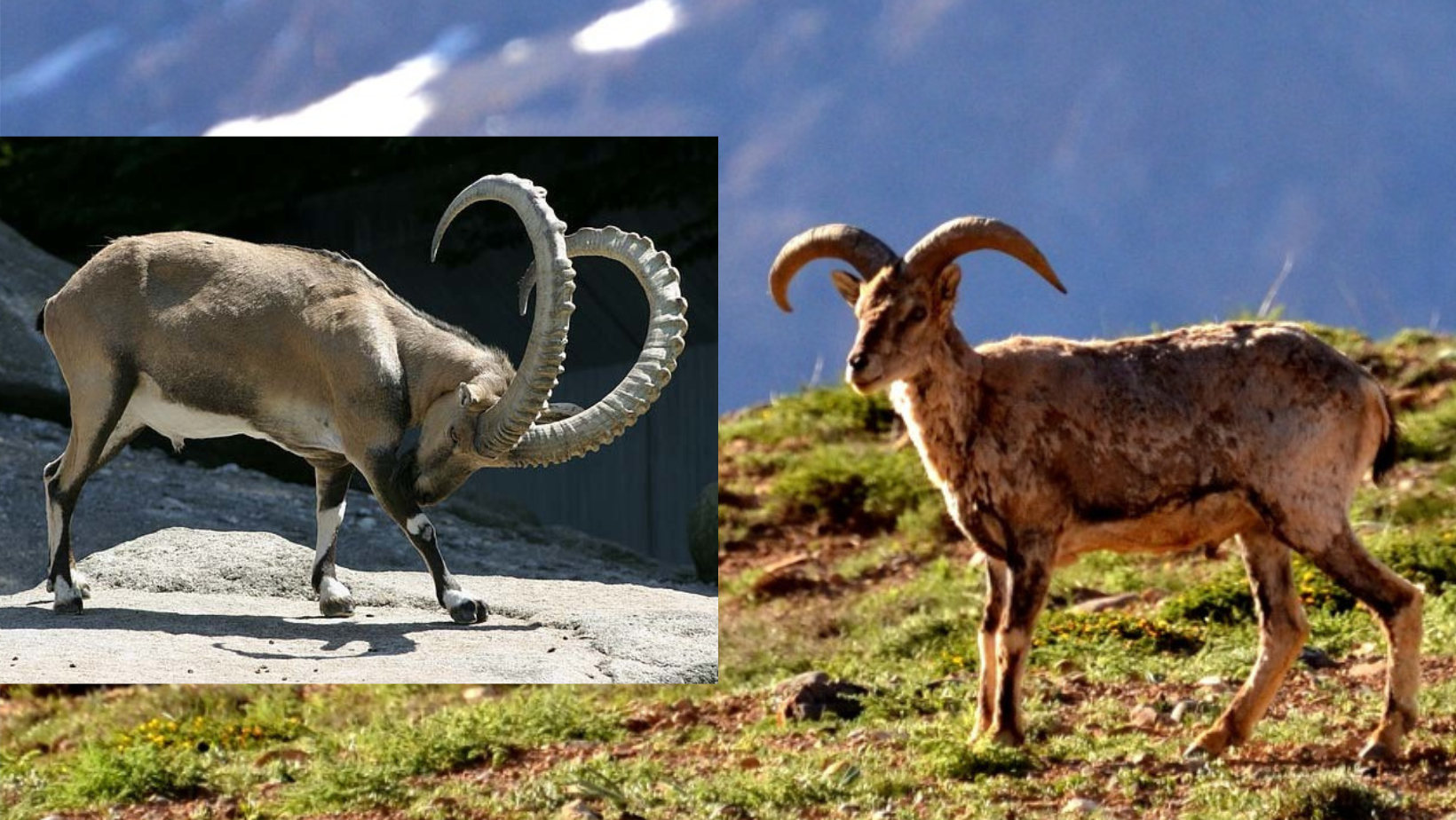Census Begins for Blue Sheep and Himalayan ibex

- 22 May 2024
Why is it in the News?
Wildlife authorities in Himachal Pradesh’s high altitude, cold desert district of Lahaul & Spiti have started surveys as part of the census to estimate the population of blue sheep or bharal and the Himalayan ibex, the main prey of the iconic snow leopard.
About Himalayan Ibex:
- The Himalayan ibex, a subspecies of the Siberian ibex, is native to the Himalayan regions of India, Pakistan, Tibet, and Nepal.
- These sure-footed, sturdy wild goats belong to the genus Capra in the family Bovidae and are typically found in mountainous regions across Europe, Asia, and northeastern Africa.
- Scientific Name: Capra sibirica hemalayanus
- Habitat: Himalayan ibex inhabit the high-altitude regions of the Himalayas, including the Trans-Himalayan areas, at elevations between 3,000 and 5,800 meters.
- In India, they are primarily found in the states of Jammu and Kashmir, Himachal Pradesh, and Uttarakhand.
Features:
- Size: Adult Himalayan ibex weighs about 90 kg and stands around 40 inches tall.
- Sexual Dimorphism: Males are larger than females and have large, curved horns with front notches that grow each year.
- Coat: Their coat varies from light brown to reddish-brown with a white belly and distinctive black and white markings on their legs.
- The coat is thick and woolly in winter, shedding in early summer. A darker dorsal stripe is also present.
- Behaviour: They are typically found in small herds, sometimes numbering up to 50 individuals.
- They are agile and can run at speeds of up to 50 km/h.
Conservation Status:
- IUCN Red List: Near Threatened
About Blue Sheep/Bharal:
- The blue sheep, also known as the bharal, is a caprine species native to the high Himalayas.
- Its scientific name is Pseudois nayaur, and it is the sole member of the genus Pseudois.
Distribution:
- The bharal is found in several countries, including India, Bhutan, China (specifically in Gansu, Ningxia, Sichuan, Tibet, and Inner Mongolia), Myanmar, Nepal, and Pakistan.
Features:
- Size: Medium-sized caprids, measuring 115 to 165 cm (45 to 65 in) in length, with tails ranging from 10 to 20 cm (3.9 to 7.9 in).
- They stand 69 to 91 cm (27 to 36 in) at the shoulder.
- Sexual Dimorphism: Males are slightly larger than females.
- Coat: Their short, dense coat is slate grey, often with a bluish shine. The underparts and backs of the legs are white, while the chest and fronts of the legs are black.
- Horns: The horns grow upwards, curve out, and then back, resembling an upside-down arc.
- Behaviour: Bharal are diurnal, alternating between feeding and resting on grassy mountain slopes.
Conservation Status:
- IUCN Red List: Least Concern
- Wildlife Protection Act 1972: Schedule ICoat: Their short, dense coat is slate grey, often with a bluish shine. The underparts and backs of the legs are white, while the chest and fronts of the legs are black.
- Horns: The horns grow upwards, curve out, and then back, resembling an upside-down arc.
- Behaviour: Bharal are diurnal, alternating between feeding and resting on grassy mountain slopes.
Conservation Status:
- IUCN Red List: Least Concern
- Wildlife Protection Act 1972: Schedule I
